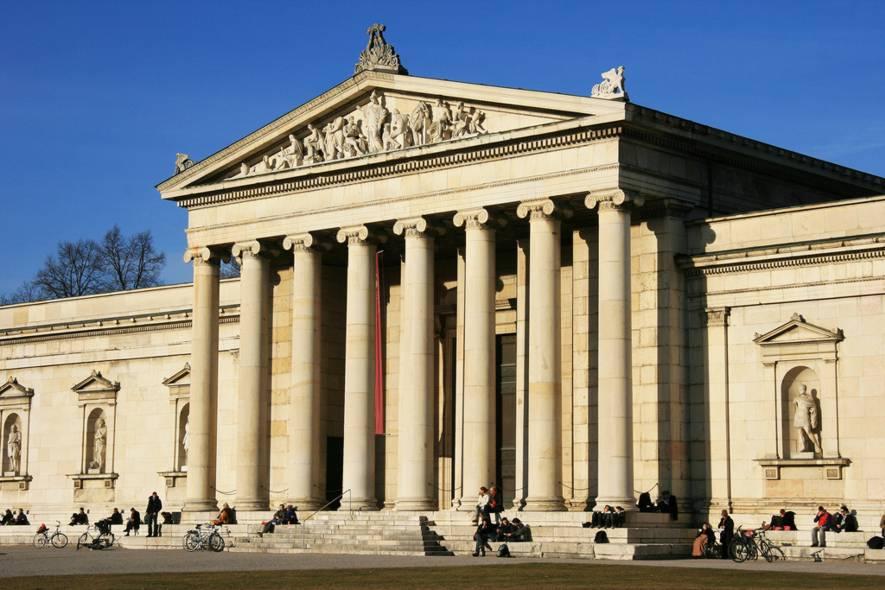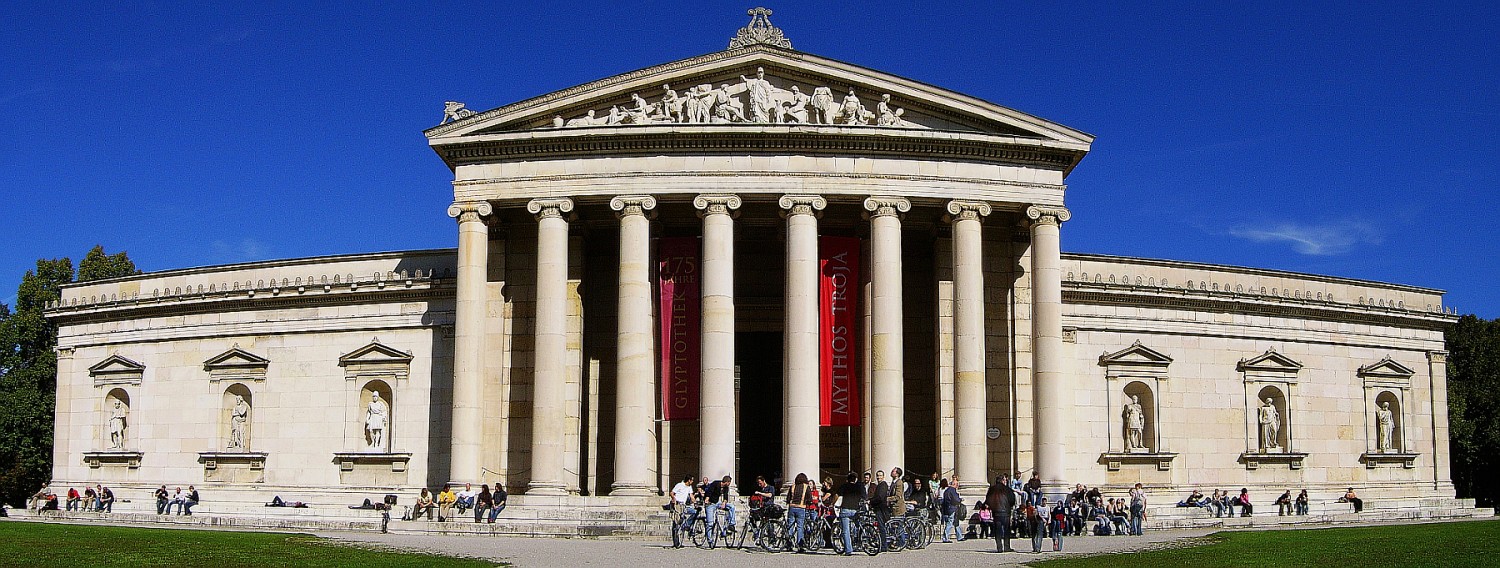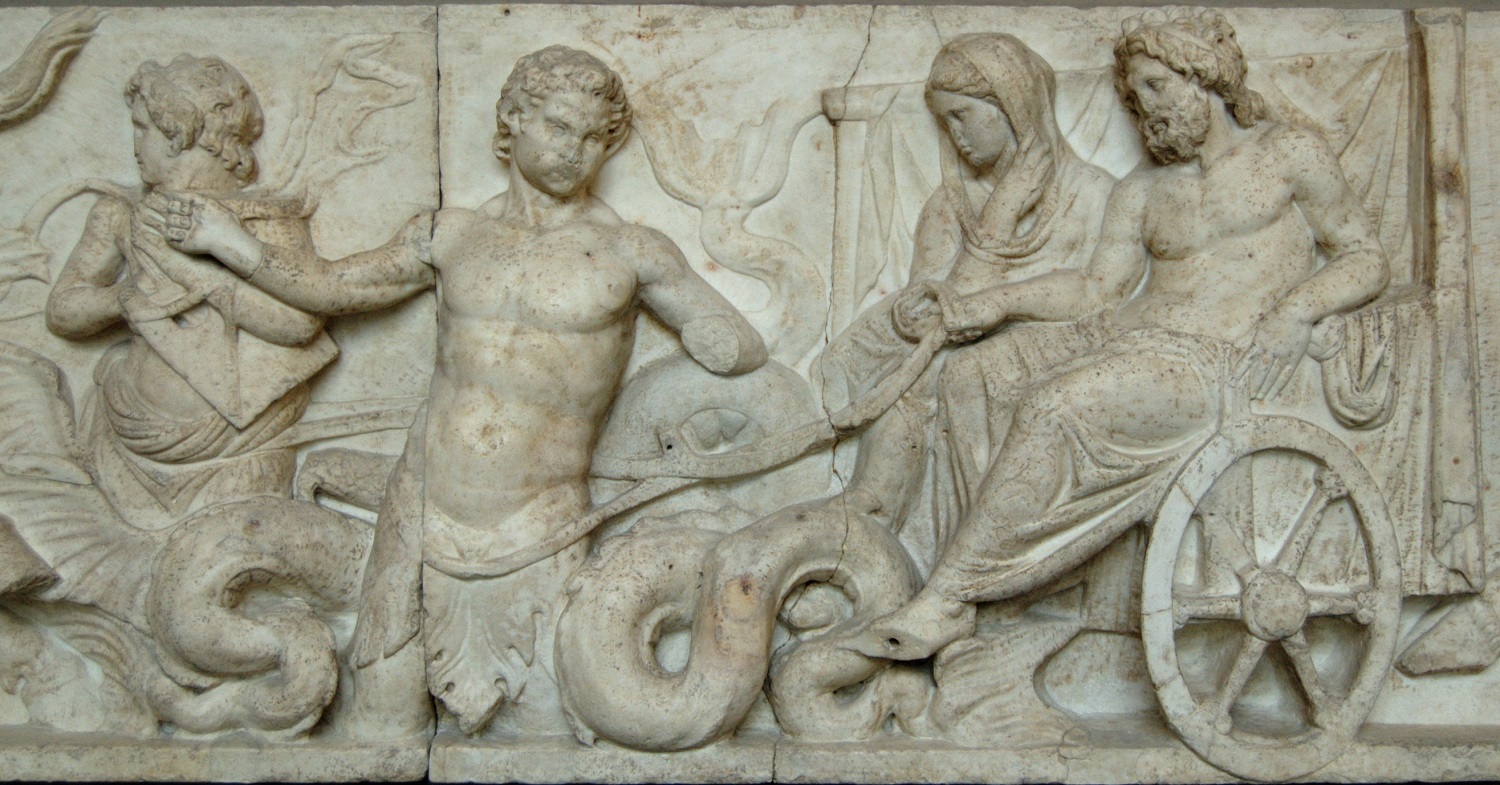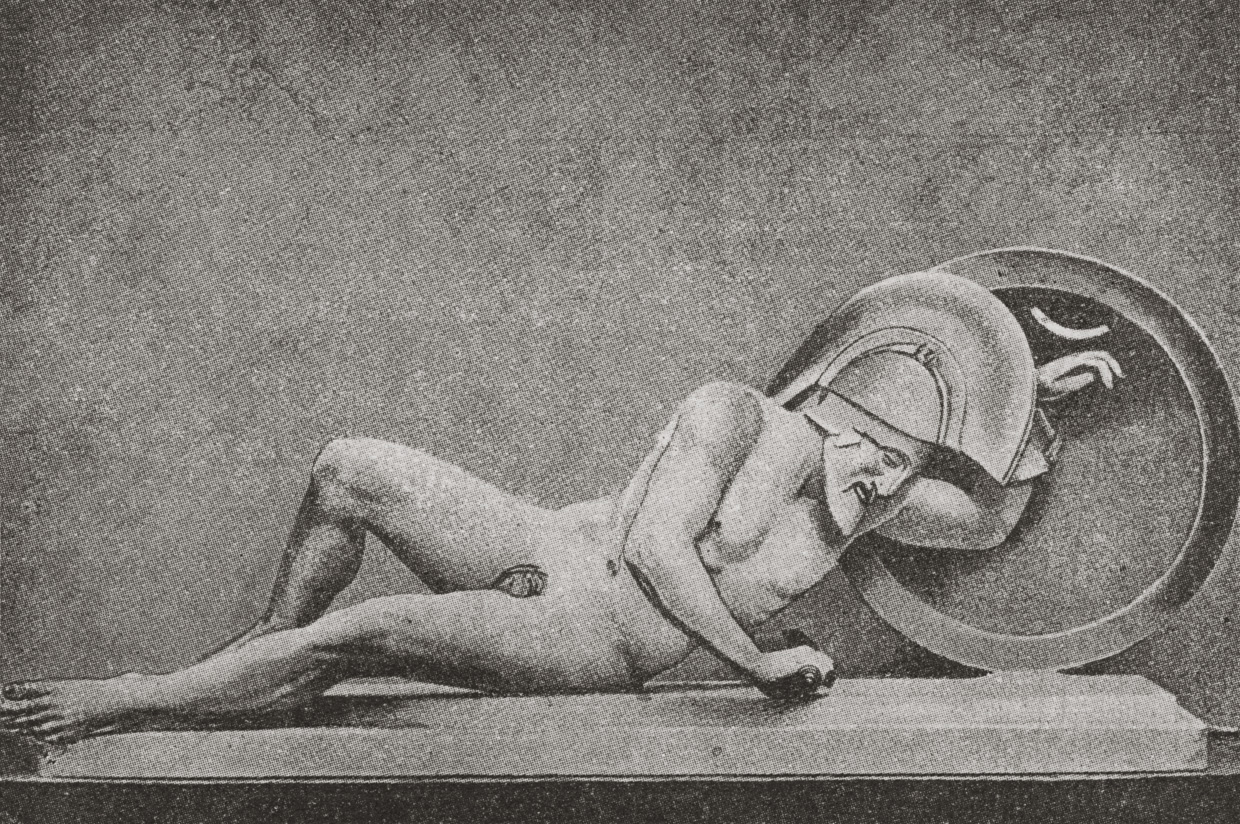The Glyptothek is a museum in Munich, Germany, which was commissioned by the Bavarian King Ludwig I to house his collection of Greek and Roman sculptures. It was designed by Leo von Klenze in the Neoclassical style, and built from 1816 to 1830. Today the museum is a part of the Kunstareal.
The Glyptothek was commissioned by the Crown Prince (later King) Ludwig I of Bavaria alongside other projects, such as the neighboring Königsplatz and the building which houses the State Collection of Greek and Roman Antiquities, as a monument to ancient Greece. He envisioned a "German Athens", in which the ancient Greek culture would be remembered; he had this built in front of the gates of Munich.
The layout of the Königsplatz complex was designed by the architects Karl von Fischer and Leo von Klenze in 1815, the latter arranged it in the style of a forum, with the Glyptothek on the north side. Colorful frescoes and stuccos made by distinguished artists such as Peter von Cornelius, Clemens von Zimmermann, and Wilhelm von Kaulbach adorned the walls of the museum.
Glyptothek, interior 1900
In the few years between 1806 and the opening of the museum in 1830, Ludwig completed a notable collection of Greek and Roman sculpture. Through his agents, he managed to acquire such pieces as the Medusa Rondanini, the Barberini Faun, and, in 1813, the figures from the Aphaea temple on Aegina.
The Second World War did not destroy much of the artwork in the Glyptothek; but unfortunately the frescoes did not survive and only lightly plastered bricks were visible after the museum was reopened in 1972. Since the Assyrian Hall erected in the inner court by Klenze in 1864 was not rebuilt, the Assyrian Orthostat reliefs from the palace of king Ashur-nasir-pal II and a lion from the Ishtar Gate of Babylon were moved into the Staatliche Sammlung für Ägyptische Kunst.
The museum was designed in the Classical Greek - Italian style. The portico is Ionic, and the outer walls contain niches, in which 18 original Roman and Greek sculptures stand, six on each wall (except the back). The thirteen rectangular, square or round rooms are arranged around a courtyard, the vestibule in the central building dominates the halls of height. In front of the vestibule is the portico of twelve Ionic columns. The overlying gabled includes a group of Johann Martin von Wagner represents Athena as protector of the plastic arts. The exterior walls are adorned with sculptures in niches, while the windows are open to the interior courtyard. The sculptures represent mythical or historical representatives of the arts, these are in the front of the Königsplatz Daedalus, Prometheus, Hadrian, Pericles, Phidias and Hephaestus. On the western and eastern side of the building there are sculptors of the Renaissance and of the times when the Glyptothek was built, including Bertel Thorvaldsen and Antonio Canova, whose works were once on display earlier in the Hall of the Glyptothek but were later moved to the Neue Pinakothek.
The museum was originally built completely out of marble. However, during World War II the museum was bombed, and later reconstructed. The walls from the interior are composed of red brick and painted with a light plaster. The interior has domed vaulting.













